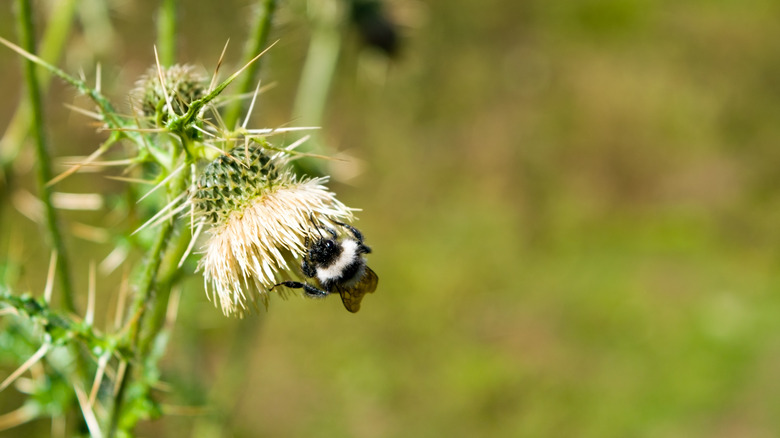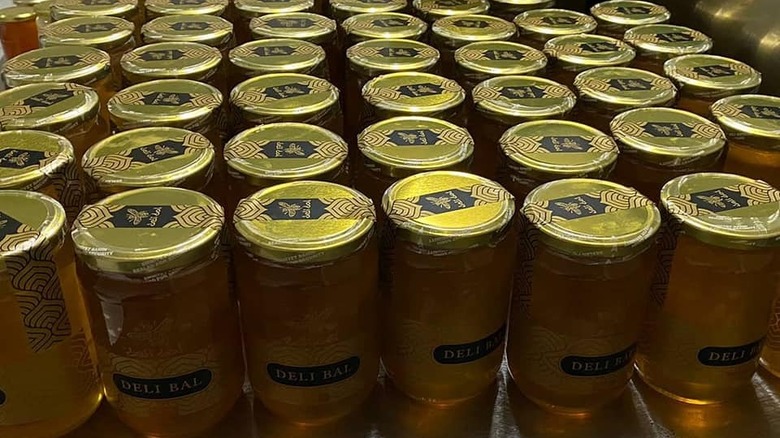Nepal's Hallucinogenic 'Mad Honey' Is As Harrowing To Harvest As It Is To Eat
Honey boasts an abundance of health benefits. Not only is it rich in antioxidants, observes Mayo Clinic, but this golden bee-made substance has also been shown to improve cardiovascular and gastrointestinal health. Remarkably, a Nutrients study published earlier this year found that honey improves memory, too, and may have a future role as a cholinesterase inhibitor in the treatment of Alzheimer's. It bears noting, however, that there are more than 300 different types of honey, each of which provides varying degrees of beneficial qualities.
So-called "mad honey," for instance, is known to help with the alleviation of hypertension and is also used as an energy booster. But as Atlas Obscura notes, this unusual form of honey is probably best known for its hallucinogenic qualities, which are the result of a grayanotoxin specific to the rhododendron flowers from which its nectar is sourced. Mad honey has long been cultivated for its hallucinogenic properties in countries like Nepal and Turkey, with a history that dates back thousands of years.
The most famous example involving mad honey dates back to 67 B.C., per Modern Farmer, when Turkish forces laid honey traps for Pompey the Great's Roman army. Many mind-altered Roman soldiers were slaughtered as a result.
Where 'mad honey' is found, and what happens when it's ingested
Outside of Pompey's army, no fatalities have been attributed to mad honey, notes Atlas Obscura. But the harvesting of this unusual red-hued honey is certainly treacherous, at least in Nepal, where bees make honey on steep cliffs, and intrepid cultivators are forced to climb — in some cases, straight up the vertical cliff faces — to reach their sought-after prize. It's a perilous undertaking; one made even more harrowing by frequent bee stings.
Very few rhododendron species — perhaps as little as two of the over 700 in total — produce the nectar for hallucinogenic honey, however, which helps to explain why Nepal and the Black Sea region of Turkey are among the few places where it's cultivated, (via Modern Farmer). In Turkey, mad honey is called deli bal, and it's often used as a medicine or an aphrodisiac. In addition to hallucinations, the effects of the honey can range from numbness to fainting or seizures, depending upon how much has been ingested, of course. A spoonful is more than enough to showcase its dizzying effects.
Yes, the honey is available to purchase outside Nepal and Turkey and has been for centuries. As Modern Farmer points out, mad honey made its way to Europe via trade during the 18th century and is now sold online, although typically at rather high prices due to its rarity.

